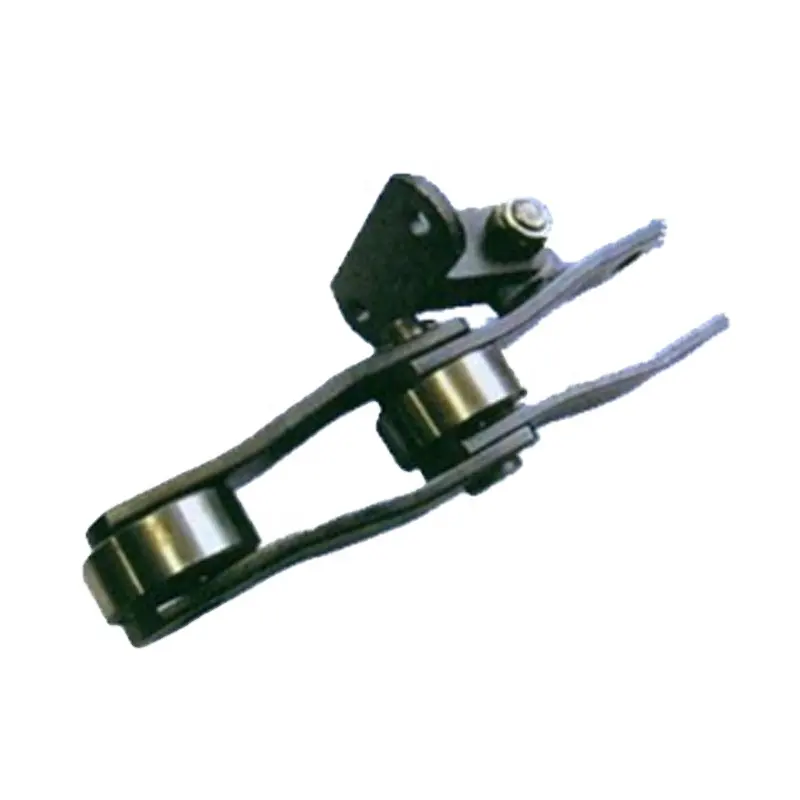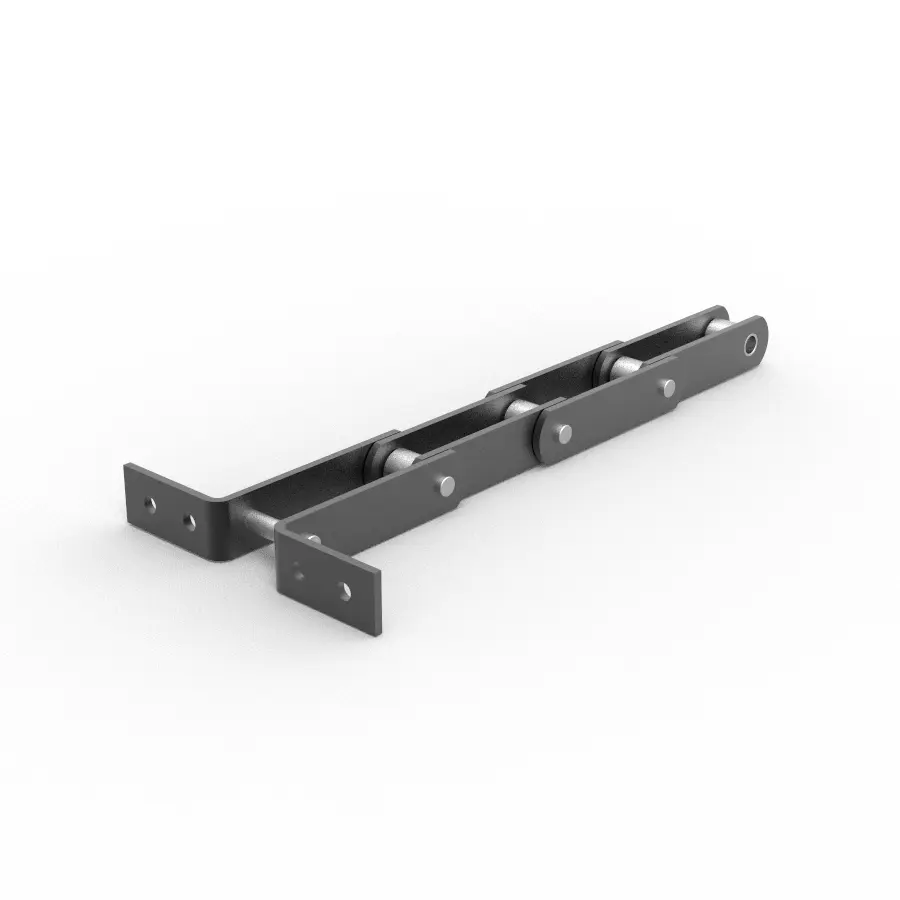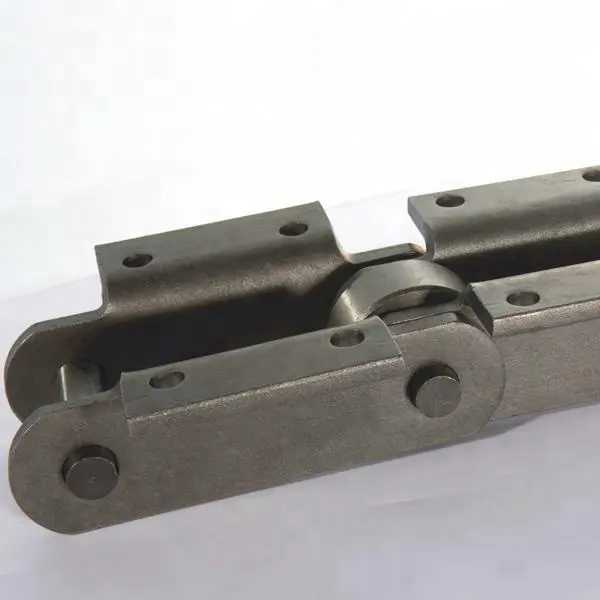Product Description
CZPT rollers enhance rotation on the bushing while reducing impact loads on the sprocket tooth during operation.
All components are heat treated to achieve maximum strength.
Pre-loaded during the manufacturing process to minimize initial elongation.
Hot dipped lubrication ensures 100% lubrication of all chain components to extend wear life and reduce maintenance costs.
| CHAIN NO. |
PITCH | BUSH WIDTH |
ROLLER DIA |
PIN | PLATE | MIN. TENSILE STRENGTH |
MAX. TENSILE STRENGTH |
WEIGHT | |||||||
| d | L1 | L2 | H | t/T | |||||||||||
| mm | mm | mm | mm | mm | mm | mm | mm | KN/min | KN/min | kg/m | |||||
| US101.6 | 101.60 | 31.80 | 57.15 | 15.88 | 34.40 | 38.40 | 38.10 | 6.40 | 72.3 | 8.20 | 11.67 | ||||
| P101.6-R47 | 101.60 | 30.00 | 47.00 | 15.88 | 41.00 | 45.00 | 41.00 | 10.00 | 242.0 | 19.40 | 17.98 | ||||
| US127 | 127.00 | 38.40 | 69.85 | 19.00 | 45.10 | 51.40 | 50.80 | 9.60 | 180.0 | 20.30 | 19.22 | ||||
| P152.4-R66.7 | 152.40 | 30.00 | 66.70 | 26.92 | 35.50 | 41.50 | 50.80 | 8.00 | 167.0 | 13.40 | 16.11 | ||||
| C9060 | 152.40 | 37.70 | 69.85 | 18.90 | 45.00 | 49.30 | 50.80 | 9.50 | 250.0 | 28.20 | 17.20 | ||||
| C 0571 1 | 152.40 | 37.70 | 69.85 | 18.90 | 44.90 | 50.30 | 57.20 | 9.50 | 377.9 | 28.20 | 18.74 | ||||
| C 0571 3 | 152.40 | 38.00 | 76.20 | 23.83 | 47.10 | 54.90 | 61.90 | 10.30 | 635.0 | 36.10 | 22.27 | ||||
| 1796 | 152.40 | 37.80 | 69.85 | 76.20 | 73.00 | 22.23 | 43.90 | 53.20 | 57.20 | 9.50 | 444.5 | 33.30 | 18.50 | 19.50 | 19.20 |
| Usage: | Transmission Chain, Conveyor Chain, Dedicated Special Chain, Roller Chain |
|---|---|
| Material: | Alloy/Carbon Steel |
| Surface Treatment: | Polishing |
| Feature: | Heat Resistant |
| Chain Size: | 4"*6" |
| Structure: | Roller Chain |
| Samples: |
US$ 10/Meter
1 Meter(Min.Order) | |
|---|
| Customization: |
Available
| Customized Request |
|---|

Can mill chains be used in the automotive manufacturing and assembly processes?
Yes, mill chains can be used in the automotive manufacturing and assembly processes to facilitate material handling and conveyor systems. These chains play a vital role in ensuring a smooth and efficient production process in the automotive industry. Here’s how mill chains are utilized in this sector:
1. Material Handling: Mill chains are employed to handle and transport various components and parts throughout the manufacturing facility. They are used in conveyor systems to move materials between different stages of the assembly process.
2. Assembly Line: In automotive assembly lines, mill chains are often used to move car bodies and chassis along the production line. They are used in overhead conveyor systems, floor conveyors, and other configurations to ensure the seamless flow of components during assembly.
3. Jig Fixtures: Mill chains are integrated into jig fixtures, which hold and position car components during welding, painting, and other assembly processes. The chains allow for precise movement and positioning of the components, ensuring accurate alignment and quality in the final product.
4. Power Transmission: Mill chains are used for power transmission in various machinery and equipment within the automotive manufacturing process. They efficiently transfer power from motors to conveyor systems and other equipment, enabling smooth operation and consistent production.
5. Durability: The automotive industry often requires heavy-duty and durable solutions due to the large-scale production and continuous operation. Mill chains, made from high-quality materials, such as alloy steel, are capable of withstanding the demanding conditions and loads in automotive manufacturing.
6. Maintenance: Regular maintenance of mill chains is essential to ensure their optimal performance in automotive manufacturing. Lubrication, inspection, and prompt replacement of worn or damaged parts are necessary to prevent downtime and maintain efficiency.
Overall, mill chains are versatile and reliable components used in the automotive industry for material handling, assembly line movement, power transmission, and fixture positioning. Their ability to handle heavy loads, precise movements, and harsh manufacturing environments makes them a valuable asset in the automotive manufacturing and assembly processes.

Can mill chains be used in the glass and ceramics manufacturing industry?
Yes, mill chains can be used in the glass and ceramics manufacturing industry for various material handling applications. The glass and ceramics industry often involves the processing and movement of raw materials, finished products, and waste materials. Mill chains are well-suited for handling these tasks efficiently and reliably. Here’s how mill chains are utilized in the glass and ceramics manufacturing industry:
- Raw Material Handling: Mill chains are employed in the transportation of raw materials such as silica sand, limestone, feldspar, and other ingredients used in glass and ceramics production. These materials can be in bulk form or powdery/granular form, which mill chains can handle effectively.
- Kiln and Furnace Applications: In ceramics manufacturing, mill chains can be used to move ceramic wares through kilns and furnaces during firing processes. The chains are designed to withstand high temperatures and provide smooth and reliable conveying of the products through the heat treatment stages.
- Finished Product Handling: Mill chains are used in the movement of finished glass products, ceramic tiles, or other ceramic wares within the production facility, such as transferring them from one processing station to another or for packaging and storage purposes.
- Waste and Scrap Handling: The glass and ceramics manufacturing process generates waste and scrap materials that need to be removed efficiently. Mill chains with suitable attachments can be used to transport these waste materials to recycling or disposal areas.
Mill chains are known for their durability, strength, and ability to handle heavy loads, making them ideal for the demanding and often harsh operating conditions in the glass and ceramics industry. Regular maintenance and proper chain selection are essential to ensure optimal performance and longevity of the mill chains in these applications.

How do you select the right size and type of mill chain for your specific needs?
Selecting the appropriate size and type of mill chain is essential to ensure optimal performance and longevity in material handling systems. Here are the steps to guide you in choosing the right mill chain for your specific needs:
1. Determine the Application Requirements:
Identify the specific requirements of your material handling application. Consider factors such as load capacity, operating speed, environment (indoor or outdoor), temperature range, and potential exposure to chemicals or corrosive substances.
2. Calculate the Load:
Determine the maximum load the mill chain will need to support during operation. The load capacity of the chain should exceed the maximum expected load to ensure safety and prevent premature wear.
3. Consider the Pitch:
The pitch refers to the distance between the centers of two consecutive chain links. Select a mill chain with an appropriate pitch size that matches the sprocket teeth and ensures smooth engagement.
4. Evaluate the Strength:
The strength of the mill chain is crucial for heavy-duty applications. Consider the tensile strength and breaking load of the chain to ensure it can handle the expected loads without deformation or failure.
5. Assess the Material:
Based on the application’s requirements and environment, choose the appropriate material for the mill chain. Options include carbon steel, stainless steel, alloy steel, nickel-plated steel, or plastic/polymer, each with different properties to suit specific conditions.
6. Determine the Lubrication Needs:
Some mill chains may require periodic lubrication to reduce friction and wear. Consider whether lubrication is necessary for your application and select chains that can withstand the lubrication method used.
7. Consult with Experts:
If you are unsure about the suitable mill chain for your specific needs, consult with chain manufacturers or experts in material handling systems. They can provide valuable insights and recommendations based on your application’s requirements.
8. Regular Maintenance:
Ensure proper maintenance and periodic inspection of the mill chain to extend its lifespan and prevent unexpected breakdowns. Regularly lubricate the chain if required and replace any worn or damaged components promptly.
By considering these factors and following the proper selection process, you can choose the right size and type of mill chain that will meet the demands of your specific material handling application and contribute to the overall efficiency and reliability of your system.


editor by CX 2023-08-02